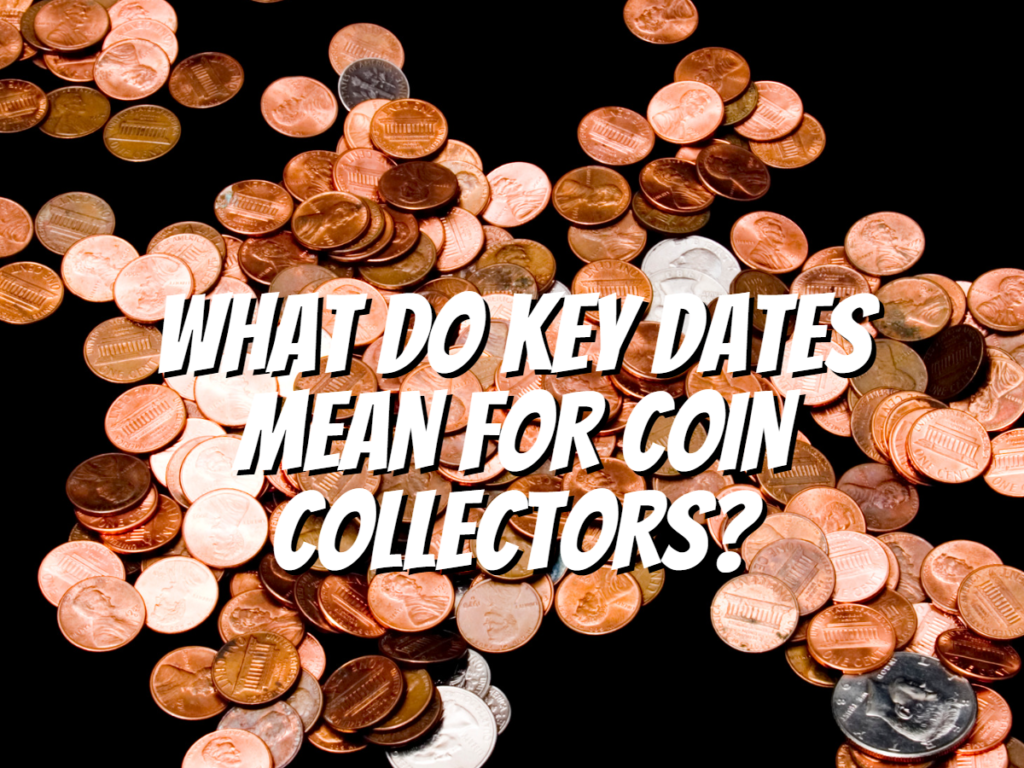If you’re a coin collector, you’ve probably heard the term “key date” thrown around.
But what does it mean? And how can you find out if your coins are key dates?
\This article will explain key dates, how to identify them, and why they matter for coin collectors.
What Do Key Dates Mean?

Key dates are the rarest and most valuable coins in a series. Collectors prize them because they are scarce, so finding them can be difficult.
As a result, a coin with a key date is typically the last to be added to a collection because the date or the date and mint mark combination is particularly scarce or difficult to locate.
Most collectors require this coin to finish a specific coin collection, and it is frequently one of the most highly-priced coins in the series you are collecting.
What Makes Key Date Coins So Rare?
So, what makes a coin a key date? Well, many factors come into play. For example:
- How many coins were minted in the first place
- How many of those coins were saved by collectors instead of being melted down or destroyed
Once you understand these things, you can use them to determine how many rare coins are left for you to find.
Factors That Affect Key Date Coin Value
Key date coins are valuable because of the factors that affect their rarity.
For example, the key dates for a series are usually the first year of the issue, only a few coins were minted, and there is limited demand for that particular coin.
These factors combine to make these rare coins, which drives their price. Here are factors that affect key date coin value:
Mintage

What distinguishes a coin as a key date is its initial mintage of a specific date and mint mark combination.
Coins are all regarded as uncirculated as they emerge from a coin press.
The potential of a coin struck in the early 1800s remaining in circulation today begins with this initial production.
Typically, the key dates are the coins with the lowest mintage. This might not always be the case, though.
Some coins may be lost or melted as they are circulated for the intrinsic worth of the precious metal they contain.
Survival Rate

A coin is put into circulation after it is first struck. From there, these coins are used in regular commerce.
A coin may be lost or taken out of circulation if it is excessively worn out or damaged. The coin can be added to your collection if saved and handed down from one generation to the next.
If it were lost or destroyed, though, it would never again be included in a coin collection.
Condition Rarity

A coin is more valuable, the better maintained it is. Which coin is the key date will depend on its grade within the set you are attempting to assemble.
For instance, the 1909-S V.D.B. Lincoln cent is typically considered the important date in the series.
They are mostly correct, though. However, locating a 1914-D Lincoln cent in MS-65 Red will be more difficult than a 1909-S V.D.B. with the same grade if you try to put together a set of uncirculated Lincoln cents.
The key date for an uncirculated series of Lincoln cents is thus 1914-D.
Popularity

Do you believe that coin to be precious if only 50 collectors want it out of 100 specimens? Most likely not.
In contrast, a coin like the 1909-S V.D.B. Lincoln cent, which had a mintage of 484,000 pieces and possibly 50,000 survivors, is rare because so many people collect Lincoln cents!
Takeaway:
Key dates are among the most valuable coins listed in numismatic catalogs because they were minted in the lowest quantities during their year of issue, making them rarer than others that were struck during that period.
As a result, people often kept their key date coins as investments rather than spending them or trading them with other collectors.
That makes sense: since they’re rare and have a long history of worth more money than other coins, why would anyone want to spend one?
Before you go…
Key date coins may be a great option if you’re looking for an exciting way to invest. But, as we’ve seen, many factors affect the value of these coins—including their rarity and demand for them among collectors. These factors can also change over time depending on market conditions or the availability of other types of investments.
Check out my next article: “Jefferson Nickel – The History, Facts & Key Dates.”
Related Articles:

